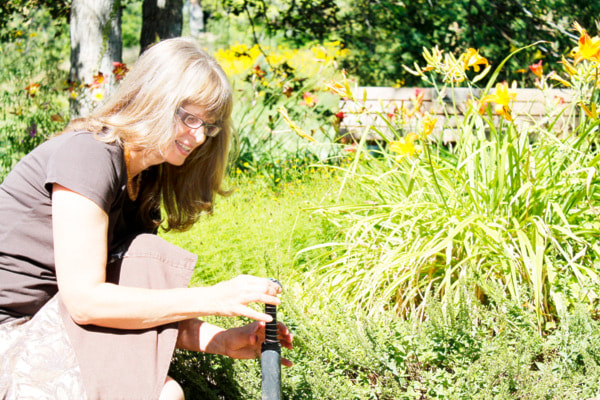The Friends of the Summerland Ornamental Gardens Society is hoping to help Okanagan residents balance their desires for a beautifully landscaped yard with the reality of living in one of Canada’s driest regions.
To this end, the gardens will soon be launching a multifarious pilot water conservation project that Eva Antonijevic, the project’s manager, said will reduce the gardens’ water use by 15 to 30 per cent while educating and demonstrating to the public what can be done to save water.
“In the Okanagan, we have limited water resources and we feel that our gardens aren’t really up to scratch to be used as a demonstration for residents that are all now starting to be charged here for water usage, and we’d like to lead by example,” explained Antonijevic.
The project, which received funding from a number of organizations throughout B.C. and the Okanagan region, is broken down into a number of phases. The first, which will be happening over the next fortnight, is an irrigation audit to determine how much water the gardens use now. The second phase will be the installation of a number of water meters to track water use of different beds, allowing people to see the water use of different kinds of plants.
As well as stepping up the water measurement for the gardens, staff will be doing a massive overhaul on the plants’ lifeline during the hot summer months. The gardens’ 40-year-old “mishmash of irrigation” will be updated, with new heads being installed in some areas and drip lines being used in others. Drip lines are one of the most water-efficient methods of irrigation.
There will also be a number of low-water demonstration beds to cater to different people’s desires for their gardens.
“We’re going to be filling several transitional gardening beds that still have a traditional esthetic, a cultivated and proper kind of a garden, but still planted with low-water plants,” said Antonijevic.
As well, the gardens also features a demonstration two-acre xeriscape garden, which consists entirely of plants that, while beautiful, can naturally survive and thrive in the harsh climate.
Complementing these efforts, the gardens society will be holding public workshops on different ways to make one’s garden more water efficient, from using irrigation calculators to growing native plants to the region.
The lessons the gardens society are trying to impart on the Okanagan population are much needed, said Corinne Jackson of the Okanagan Basin Water Board, one of the funders of the project.
The Okanagan region is a special place, she explained, where there is less water per person than anywhere else in the country. However, people who live in the region use more than double the water of their counterparts across the nation — 675 litres per day, as opposed to 329. Of all the water used, roughly 25 per cent of that goes to outdoor use.
Jackson said people need to face the reality of living in a hot, dry climate, rather than keep their gardens alive with unsustainable water use, adopting water conservation practices and choosing native drought-resistant plant material that are not only beautiful but water efficient as well.
“Look at where we live. We don’t live in Vancouver or Seattle where they get much more rain and where you can expect to have the English country garden,” she said. “That’s not natural here. We should be proud of the beautiful sense of place where we live. It’s beautiful, and we just need to learn to live with what we have.
“If everyone did their part to conserve and use less, we would be in a much better situation. I don’t think we’re in a sustainable place right now,” she added.
